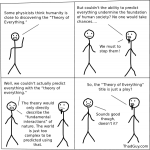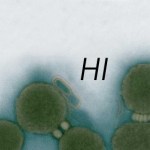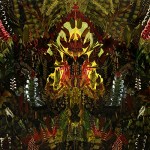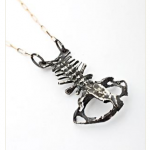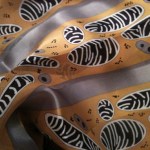biology
tags: The Stork Is Real!, religion, sex, sexuality, funny, humor, comedy, satire, fucking hilarious, social commentary, Edward Current, streaming video
Do you really believe that precious life comes from disgusting body fluids? The Truth is, babies are brought into the world by a pure white angel, the Stork.
Jan Zalasiewicz is a geologist active at the University of Leicester. His 2008 book The Earth After Us: What Legacy Will Humans Leave in the Rocks? is an interesting read even though the title does not correspond very well to the contents. Zalasiewicz does answer the question about what legacy humans will leave in the rocks. But on their own, these answers would only provide material for a magazine article. The bulk of the book is instead an introduction to geology which allows the neophyte to understand what will happen to the remains of today's world as millions of years pass.
Having no…
tags: Inside the Collections: Ichthyology at AMNH, fishes, AMNH, American Museum of Natural History, evolution, variation, biodiversity, Melanie Stiassny, streaming video
This video is the first of a new series of behind-the-scenes looks at the collections at the American Museum of Natural History. In this video, Melanie Stiassny, Axelrod Research Curator in the Department of Ichthyology, takes us through the Museum's vast collection of fishes.
The Department of Ichthyology, one of the four departments within the Museum's Division of Vertebrate Zoology, houses a collection that comprises more…
tags: evolution, biogeography, phylogeography, animals, Here Be Dragons, How the Study of Animal and Plant Distributions Revolutionized Our Views of Life and Earth, Dennis McCarthy, book review
I'm happy: another book review of mine was just published, this time, by Science magazine. This book, Here Be Dragons: How the Study of Animal and Plant Distributions Revolutionized Our Views of Life and Earth (Oxford University Press: Oxford; 2009), is by Dennis McCarthy, a researcher at the Buffalo Museum of Science in Buffalo, New York. In short, I liked the book and I thought it was generally well-…
tags: The Laryngeal Nerve of the Giraffe is Proof of Natural Selection, animals, giraffe, evolution, creationism, intelligent design, dissection, necropsy, autopsy, recurrent laryngeal nerve pathway, vagus nerve, cranial nerve X, evolutionary legacy, Richard Dawkins, streaming video
This video, including comments by Richard Dawkins, documents a necropsy (an autopsy on an animal other than a human) carried out in a classroom on a giraffe. In this video, we follow the pathway of the recurrent (inferior) laryngeal nerve, an important nerve that is a branch of the Vagus nerve (tenth cranial nerve…
Summer temp journalists are here again. Today, Swedish Broadcasting's radio news ran a really silly piece about invasive species. It made two main points: a new foreign species of plant or animal is discovered every month in Sweden, and some of them are poisonous. It's basically a case of botanical xenophobia. The journalist also made the astonishing claim that these poisonous species pose a threat to the country's biodiversity!
Poisonous plants and venomous animals are rare in Sweden, whose flora and fauna are quite poor because of the cold climate. On the other hand they are common in rich…
tags: Drop into the Ocean, Greenpeace, documentary, whaling, overfishing, fish farming, mining, oil drilling, climate change, underwater marine parks, endangered species, conservation, marine biology, streaming video
Take a deep breath and imagine the oceans.... This disturbing video is a short Greenpeace documentary outlining the threats that humans pose to our oceans and a proposal for what we ALL can do to help restore their health. [In short, if you haven't stopped eating all fish -- and most especially shrimp -- yet, this video will make you think seriously about this decision]
I don't know if I need to get out the infamous paper bag or--even worse--the Doctor Doom mask out yet. As you may recall (if you are a long time reader, anyway) is that the mind-numbing stupidity of certain MDs has driven me to want to hide my face in utter shame at the embarrassment caused by my fellow physicians. Most frequently, it has been everyone's not-so-favorite creationist neurosurgeon with dualist tendencies, Dr. Michael Egnor. So bad was he that I compared him one time to Deepak Chopra.
Damned if P.Z. hasn't led me to another highly embarrassing physician woo-meister. Worse, it's…
I've had the immense good fortune to have trained and ultimately become a physician-scientist during a time when the pace of discovery and the paradigm changes in science have occurred just over the course of my career in medicine and science has been staggering. microRNA, the shift from single gene studies to genomics, the development of targeted therapies, the completion of the Human Genome Project, these are but a few examples. Of course, arguably the Human Genome Project is the granddaddy of all of the huge changes and paradigm shifts that has occurred to revolutionize biomedical research…
"If we lived on a planet where nothing ever changed, there would be little to do. There would be nothing to figure out. There would be no impetus for science. And if we lived in an unpredictable world, where things changed in random or very complex ways, we would not be able to figure things out. But we live in an in-between universe, where things change, but according to patterns, rules, or as we call them, laws of nature. If I throw a stick up in the air, it always falls down. If the sun sets in the west, it always rises again the next morning in the east. And so it becomes possible to…
tags: Care for Some Crude With Your Sushi?, toro sushi, maguro sushi, Atlantic Bluefin Tuna, Thunnus thynnus, Gulf of Mexico, pollution, oil spill, Deepwater Horizon, BP, British Petroleum, overfishing, endangered species, conservation, marine biology, streaming video
The Gulf of Mexico oil spill is the worst environmental disaster the US has faced. Toxic oil from the Deepwater Horizon well threatens the region's sensitive shorelines and the nesting birds along the Louisiana coast. But there's another species at serious risk: the Atlantic bluefin tuna, Thunnus thynnus. This disturbing video…
What do these three quotations have in common? Hint: it lives in a petri dish.
"To live, to err, to fall, to triumph, and to recreate life out of life." -- James Joyce
"What I cannot build, I cannot understand." -- Richard Feynman
"See things not as they are, but as they might be." -- from American Prometheus, a biography of the nuclear physicist Robert Oppenheimer
Although James Joyce could never have imagined it, his words -- and those of Feynman and Oppenheimer, too -- are no longer relegated to library stacks, but instead live on inside an unlikely host: the world's first synthetic…
"Vision is not enough, it must be combined with venture. It is not enough to stare up the steps, we must step up the stairs." -Vaclav Havel
It's arguable that vision is the most important tool that an astronomer can have. This was particularly important back before the invention of the telescope, as the greatest astronomers of their time (like Tycho Brahe) were renowned for their visual acuity.
How do you stack up? You were curious about learning how good your hearing was, but what about your vision? Well, you can always get your vision tested using a Snellen eye chart, and read the bottom-…
Of all the "alternative" therapies out there, arguably the most studied is the modality known as acupuncture. Perhaps the reason is that, unlike homeopathy, which based on physics, chemistry, and biology alone is so implausible that, for it to "work," huge swaths of well-established physics and chemistry would have to be shown to be not just wrong but extravagantly and outrageously wrong (making homeopathy far more akin to magic than science), or reiki, which, when you come right down to it, is nothing more than faith healing based on Eastern mysticism rather than Christianity, acupuncture…
tags: HIV and 'Flu -- The Vaccine Strategy, microbiology, epidemiology, virology, vaccines, medicine, public health, viruses, influenza, HIV, Seth Berkley, TEDTalks, TED Talks, streaming video
Seth Berkley explains how smart advances in vaccine design, production and distribution are bringing us closer than ever to eliminating a host of global threats -- from AIDS to malaria to flu pandemics.
TEDTalks is a daily video podcast of the best talks and performances from the TED Conference, where the world's leading thinkers and doers give the talk of their lives in 18 minutes. Featured speakers…
So cute, so bioephemeral: designer Wes Thomas created a laser-cut business card that snaps out to assemble a little giraffe. He's also done a gorilla.
Via Notcot.
I have about ten favorite species of tree, and one of them is the corotú. Why? Because of one of the most interesting plant-animal interaction stories of recent times. The story, complete with extinct elephant-like creatures and a real Sherlock Holmes science theme can be read, along with some great images, at A Neotropical Savanna: The Corotú and the Gomphothere.
Did you ever wonder how all those old, large, beautiful trees get there? Along city streets, in an arboretum, someone's yard, or a public park? Well, one example of how this happens will be the Australian National Arboretum…
The God Particle, 2008
Andy Harper does amazing work with oils: fantastic gardenscapes populated with unanticipated plants. Many of his works incorporate dramatic symmetry, reminiscent of a Rorschach blot or the patters on a flowerhead.
Half Devil, Half Buccaneer
Read an interview with Andy Harper at failedrockstar.
Here's a big time want: a sterling silver necklace cast from a frog spine and skull, by Elizabeth Knight. Wow. You can find it at Catbird!
While you're there, check out Knight's spin on pearl earrings (the pearls are held by skeletal frog hands!), the 14K paired ant necklace by Jezebel, which I like even better than the skeleton (but it's way more expensive) and Cloven Hoof's Cleopatra jewel beetle necklace. Yes, they're all pretty pricey, but their brass monocle necklace is a sexy-naturalist (or librarian) option for only $22.
Via the catbird blog - highly bookmarkable for all…
So I had the pleasure of meeting the awesome Dr. Isis a few weeks ago. It turns out she is even more awesome in person than she is in pseudonymity. And she brought me a fabulous thing: a scarf from A Slice of Life Scarves. Creator Eve Reaven, a Bay Area cell biologist, "has continuously marveled at the intricacy and beauty of the natural patterns found inside cells. She shares what she has seen with others through designs for scarves and other textiles. In the current selection, she captures the essence of structures related to cell movement, cell traffic, energy and performance. Many of the…
